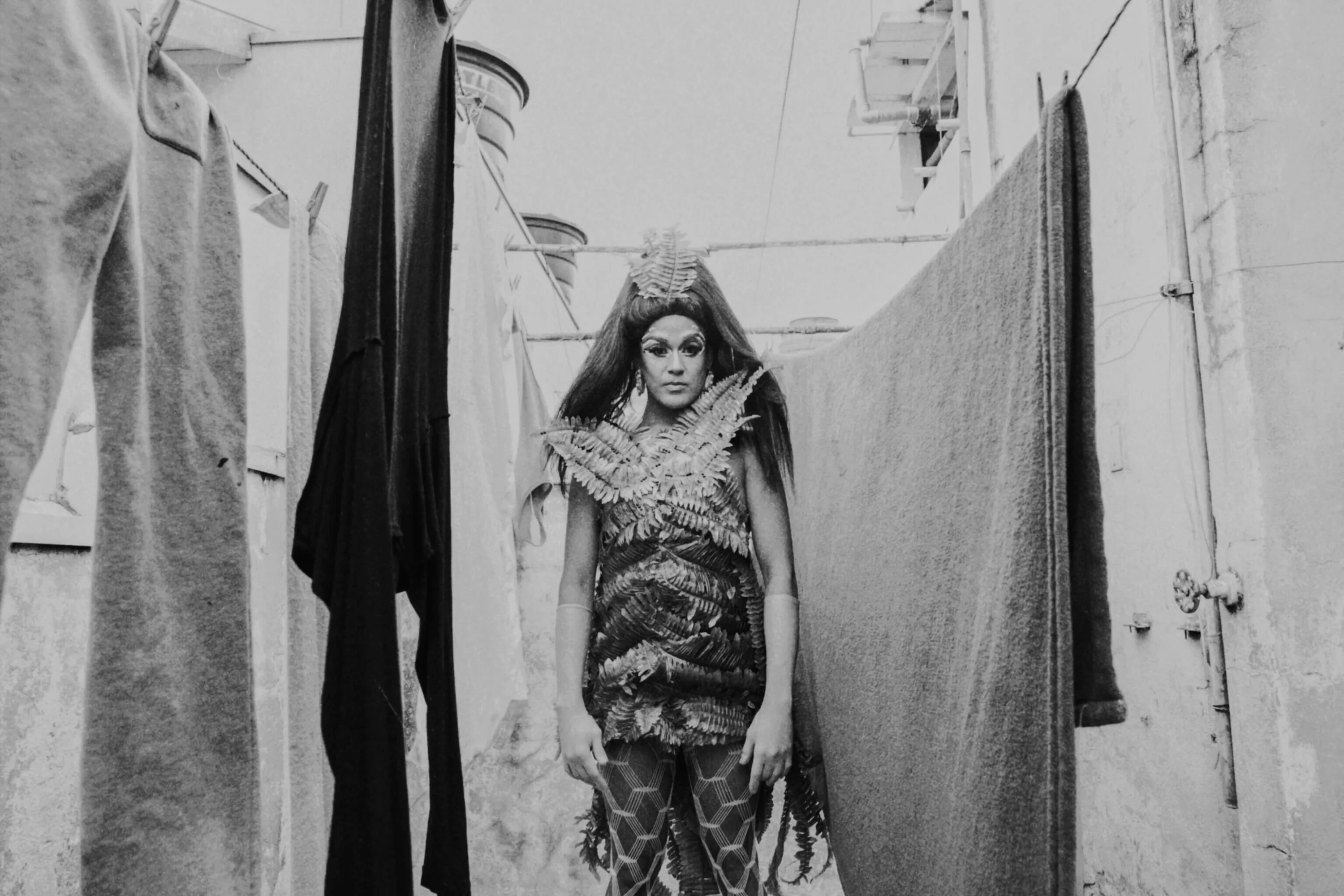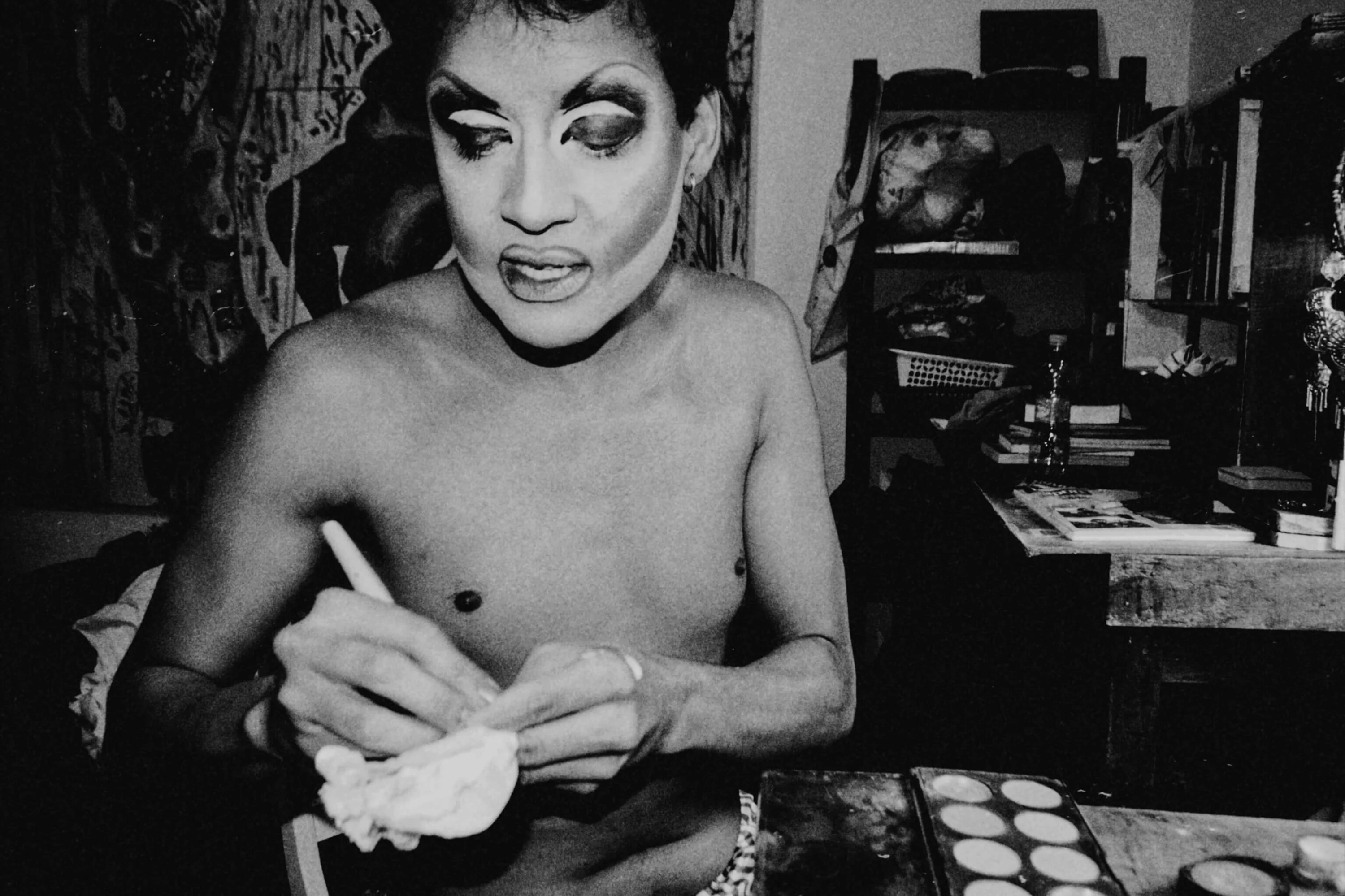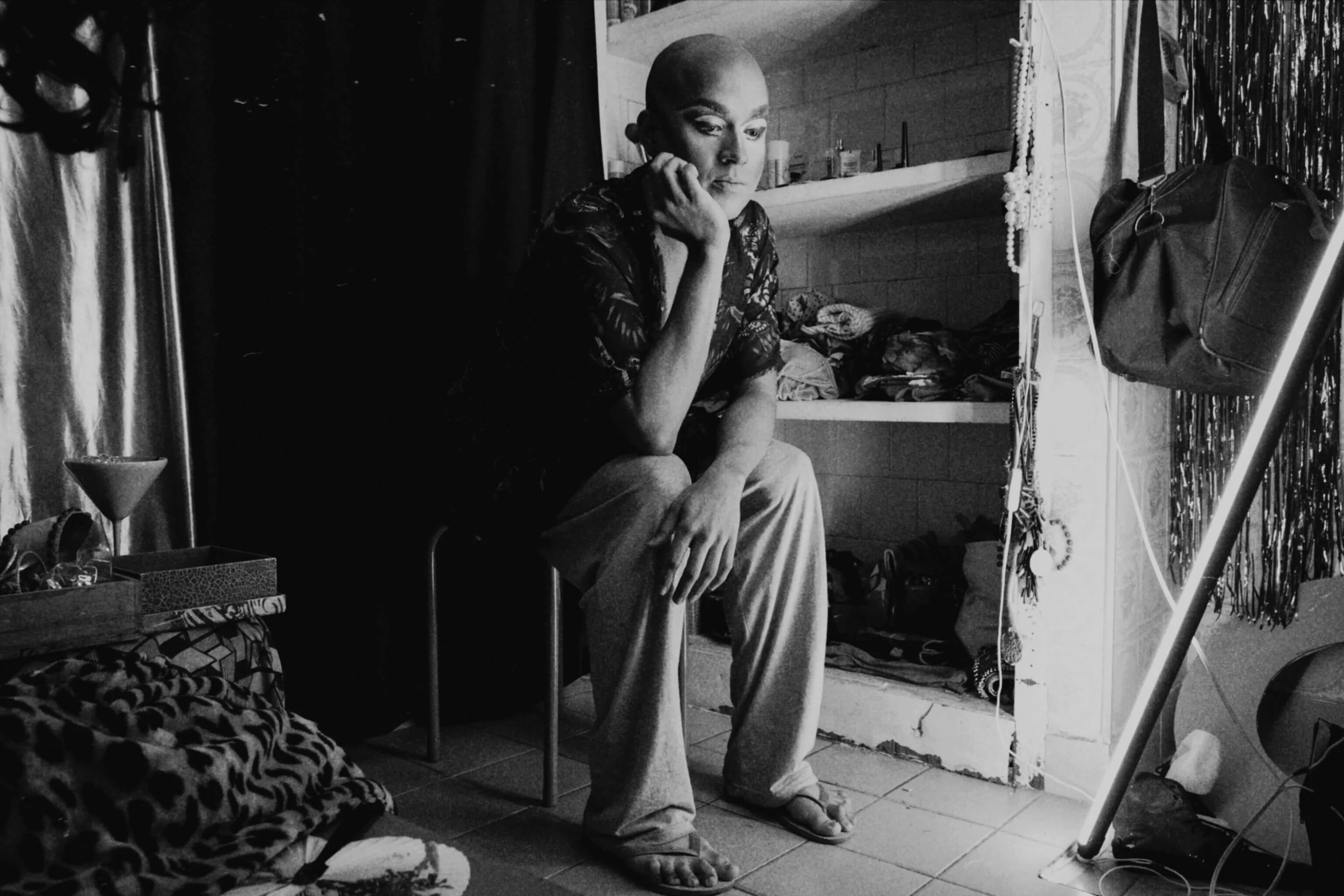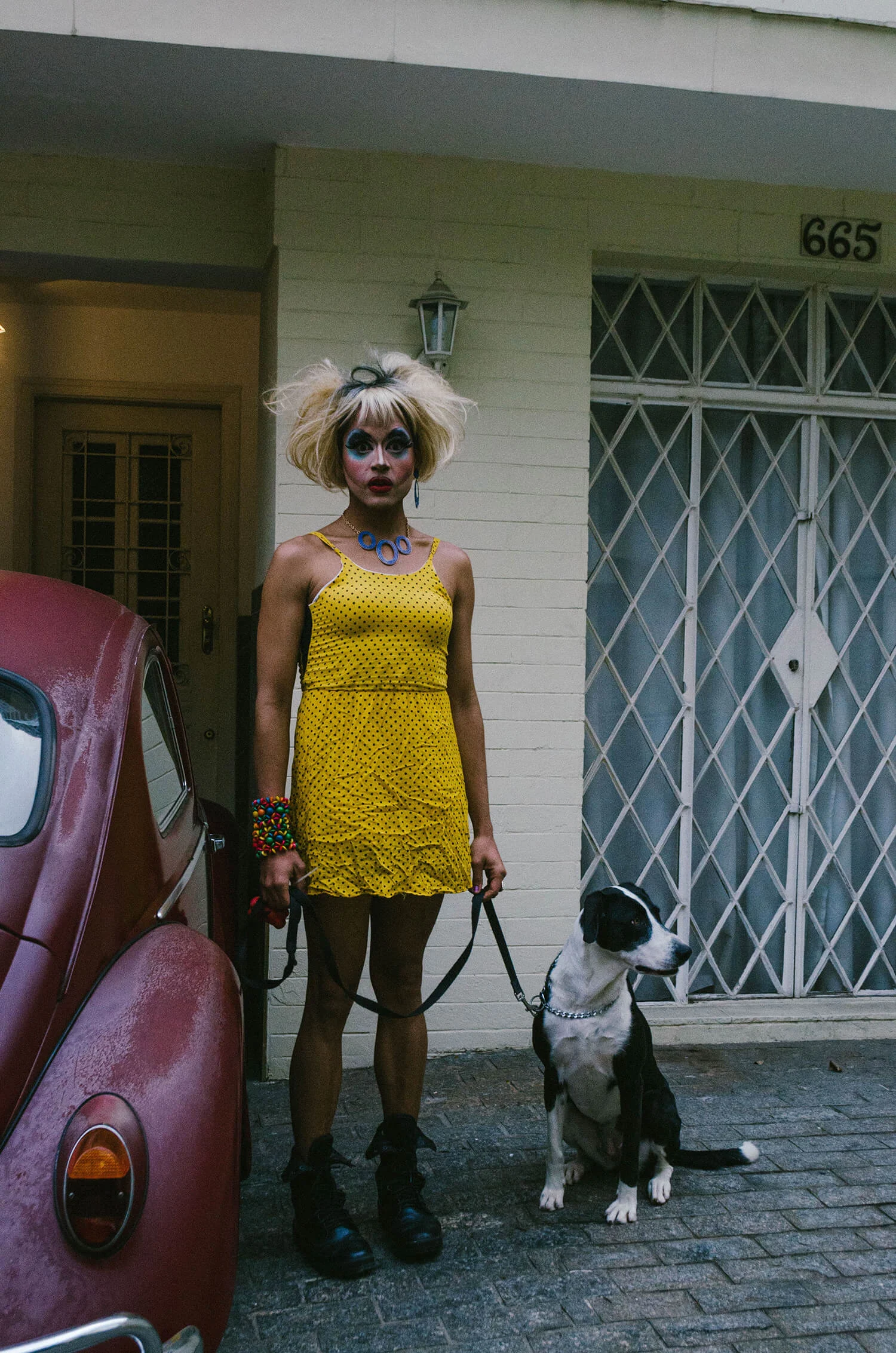

In her series I, Mackaylla, Brazilian photographer Larissa Zaidan captures the glamour and the loneliness of the drag queen universe in São Paulo. Larissa tells Marie Declercq about how she met Mackayla Maria, and how the stunning photos in the series were a product of the close bond that developed between them.
They met each other in the midst of a hurricane. Not a literal hurricane, but the kind only those who’ve experienced night time in São Paulo, the biggest city in the southern hemisphere, can know. Drowned in glitter, plastic cups and loud music, Brazilian photographer Larissa Zaidan asked if she could take a portrait of drag queen Mackaylla Maria.
“I was hypnotized by her beauty,” says Larissa. “She stands out at night. She has a very specific and fascinating kind of charisma.” Soon after she took Mackaylla's portrait, she asked if she could document the drag queen's routine. “She was very open with me, very honest,” Larissa recalls. “The next week I was at her apartment taking photos of everything.”

By day, Larissa would capture the colorful plasticity of Mackaylla’s transformation, and by night the glamour would take over. The drag queen became Larissa’s muse, and after spending months together, Larissa moved beyond Mackaylla and got to know her creator, Vinicius Santana.
Their friendship was sealed with trust, intimacy, and tenderness. "It was more than simply photographing a drag queen, because I’m part of her life as much as she’s part of mine,” Larissa explains.


I was hypnotized by her beauty. She stands out at night.

The project lasted eight months, and they haven’t lost touch since. Mackaylla's life was the subject of Larissa’s debut series, which helped her to develop a way of seeing and doing things that became hers: diving deep into other people's lives through her projects. “Intimacy is essential when I'm photographing,” she says. “I need some kind of connection.”
Mackaylla is a product of traditional Brazilian drag queen culture, dating back to the 1960s. She doesn't try to be the perfect embodiment of femininity, nor emulate someone that we could be familiar with. “She really is something else. I witnessed other drag queens feeling nervous when they knew she was going to perform on the same night as them,” Larissa says. The last time they saw each other was at the beginning of 2020, before COVID-19 swallowed the country whole, but Larissa still thinks about Mackaylla and Vinicius often.




In Brazil, where desire meets repulsion and leads to violence when it comes to the acceptance of the LGBTQAI+ community, everyone who has built themselves a drag queen persona knows that facing the streets as a performer can sometimes feel like going to war. It’s been only 36 years since Brazil became a democratic country. During the military dictartorship, it was widely accepted that police would persecute and kill gay and trans people, as if they were a threat to family values.
This past casts an aggressive shadow over everything, even if Brazilian society regularly sweeps things under the rug to escape facing its own violence. Because of that, according to Larissa, respect and empathy is the most important thing when documenting someone like Mackaylla. She believes it is essential to make her photos as accessible as she can for the people captured in them. Her work is not made only for the outside gaze, but for every corner that the visual arts don’t reach.

I’m part of her life as much as she’s part of mine.


Based in São Paulo, Larissa is dedicated to documenting youth culture, which is currently going through a dark period: economic recession, over 300,000 Brazilians dead due to COVID-19, a far-right president and a bleak and desolate future lays ahead of them. However, Larissa feels that art and photography can lend some dignity to Brazilian youth and elevate them beyond their own expectations.
She believes Brazilian youth have a unique charisma, the same charisma she found in Mackaylla. “I was a very melancholic teenager. I was quite lost on my journey to find myself and the path I wanted to follow,” she says. “In some way, when I photograph these young people, I'm looking for the things I didn't have inside me at their age.”


